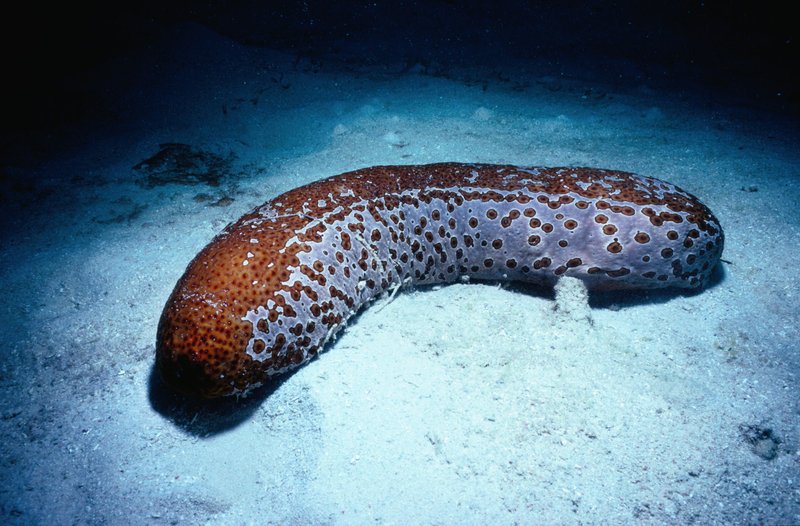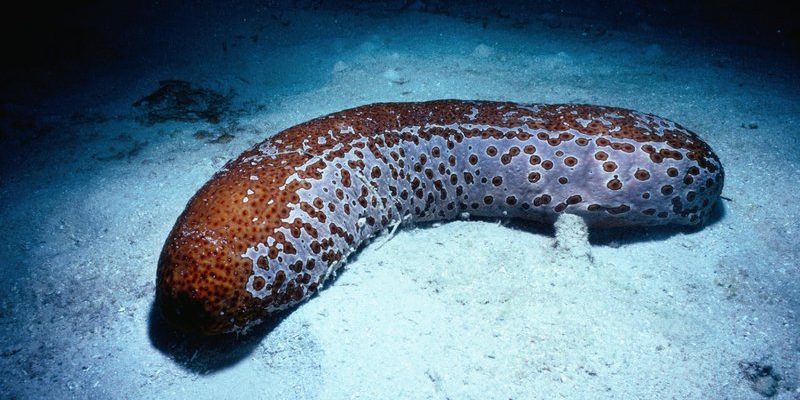
These fascinating animals inhabit shallow marine environments and can be found in various shapes, sizes, and colors. But how do they move without traditional means of navigation and how do they interact with their fellow sea cucumbers? Let’s dive deeper into the world of sea cucumbers, exploring their unique strategies for navigating and communicating under the waves.
The Unique Anatomy of Sea Cucumbers
To understand how sea cucumbers navigate, we first need to appreciate their unique anatomy. Unlike fish or mammals, sea cucumbers are part of the echinoderm family, which includes starfish and sea urchins. Their bodies are soft, elongated, and covered in a leathery skin that helps them blend into their surroundings. This makes them look like, well, a cucumber that went for a swim!
One of the standout features of sea cucumbers is their tube feet, which line the underside of their bodies. These tiny feet help them move along the ocean floor. But here’s the cool part: sea cucumbers don’t rely on traditional sight or smell to navigate. They use a combination of tactile and chemical cues from their environment. It’s kind of like how you’d feel your way around a dark room—using your hands to sense your surroundings.
These animals are also equipped with specialized structures called tentacles around their mouths. These tentacles can detect subtle changes in their environment, such as water currents and food sources. Think of it as having a built-in GPS system that helps them navigate to where they need to go.
How Sea Cucumbers Move in Their Habitat
You might be picturing a fish darting through water, but sea cucumbers take a much slower and more deliberate approach. They mostly crawl along the seafloor, using their tube feet to push and pull themselves forward. But what happens when they need to move a little faster?
In certain situations, sea cucumbers can contract their muscles to propel themselves in bursts. This allows them to escape from predators or quickly reach a new hiding spot. Imagine you’re running away from someone in a game of tag, trying to find the safest place to hide—that’s similar to what a sea cucumber does when it feels threatened.
Additionally, their soft bodies can change shape, allowing them to fit into tight spaces, making it easier for them to navigate through rocky crevices or coral reefs. This flexibility is a game-changer in the underwater world where obstacles abound.
Communication Methods Among Sea Cucumbers
Now, how do sea cucumbers manage to connect with one another in the vast ocean? While they may not have a vocal way of talking, they communicate through various non-verbal methods. Have you ever noticed how animals use body language? Sea cucumbers do something similar.
One of the primary methods of communication is through chemical signals. Sea cucumbers can release certain compounds into the water that signal other cucumbers nearby. This could convey information about their reproductive status or even alert others to danger. Imagine talking to your friend from across a crowded room without using your voice—just a glance or a wave can say a lot.
They also use tactile communication. When sea cucumbers come into contact with each other, they can exchange information and cues through touch. This is particularly important during breeding seasons. Through these interactions, they can coordinate when and how to reproduce together—a bit like planning a big event with friends.
The Role of Sea Cucumbers in Ecosystems
Sea cucumbers are often overlooked, yet they play a crucial role in marine ecosystems. They are known as *benthic feeders*, meaning they consume organic matter that settles on the seafloor. By doing this, they help recycle nutrients back into the ocean.
You might think of them as nature’s clean-up crew. They break down waste products and dead organic material, ensuring that the ocean floor remains healthy and balanced. This is essential for the growth of seagrass and coral, which in turn supports a diverse array of marine life.
Their movements also aerate the sediment, allowing oxygen to reach other organisms living in the sand and mud. Imagine stirring a pot of soup—it helps mix everything together for a more flavorful dish. Sea cucumbers do this on a much larger scale, helping maintain a thriving underwater habitat.
Threats and Conservation Efforts
Despite their vital role in the ecosystem, sea cucumbers face several threats. Overfishing, habitat destruction, and climate change are major concerns. Many cultures value sea cucumbers as a delicacy, leading to unsustainable fishing practices.
Conservation efforts are crucial to ensuring their survival. Initiatives focus on regulating fishing, restoring habitats, and promoting awareness about the importance of sea cucumbers in marine ecosystems. It’s essential to spread the word about how critical they are to our oceans’ health.
Local communities are also getting involved in conservation. By participating in sustainable practices, they can protect these unique creatures while still enjoying their benefits. Advocating for responsible fishing and habitat protection can help balance human needs and environmental health.
What We Can Learn From Sea Cucumbers
So, what can we take away from these fascinating sea creatures? In many ways, sea cucumbers remind us of the importance of adaptability and communication. They have found ways to thrive in their environment despite lacking traditional senses. Their unique navigation techniques and methods of communication highlight the beauty of diversity in nature.
In our daily lives, it’s important to recognize that there’s more than one way to approach problems. Whether it’s how we work together in teams or interact with others, sometimes we need to think outside the box. Sea cucumbers show us that there’s strength in our differences, and they inspire us to adapt and communicate in our own ways.
Whether you’re a marine enthusiast or just curious about the ocean, understanding the sea cucumber’s world adds to the rich tapestry of marine life. Next time you think about the ocean, remember these little creatures and their remarkable abilities to navigate and communicate in a world that can often be challenging.
Ultimately, sea cucumbers remind us that every creature, no matter how small or seemingly insignificant, has a role to play in the grand scheme of life. So, let’s celebrate them and work toward a future where they—and all marine life—can thrive.

